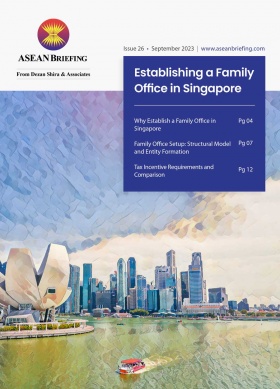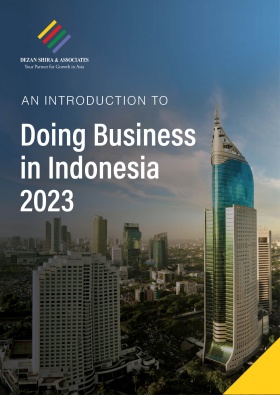Indonesia Launches Southeast Asia’s First High Speed Railway
Indonesia has launched Southeast Asia’s first high-speed railway that connects the capital Jakarta to the city of Bandung, 142km east. This has cut traveling time from 2-3 hours by conventional railway to just 40 minutes.
Indonesia successfully launched Southeast Asia’s first high-speed rail on October 2, 2023. The 142km track stretches from Jakarta to Bandung, the provincial capital of West Java province and the third largest city in Indonesia, cutting down travel time from two to three hours by conventional railway to just 40 minutes using the bullet train, reaching a top speed of 350 km/h. Chinese Premier Li Qiang took a test ride with Indonesia’s Coordinating Minister for Maritime Affairs and Investment, Luhut Binsar Pandjaitan, during the ASEAN Summit in September.
The project is part of China’s Belt and Road Infrastructure Initiative (BRI) and was built under the Kereta Cepat Indonesia China (PT KCIC) consortium, which comprises four Indonesian state-owned companies and China Railway International, a subsidiary of China Railway Group.
The 600-train capacity was initially set to cost less than US$5 billion and to be completed by 2019. PT KCIC received an initial US$4.55 billion from the China Development Bank for the project. However, setbacks, such as during the land acquisition process as well as the COVID-19 pandemic led to costs surging to US$7 billion. This also resulted in the Indonesian government using state funds to help finance the railway.The government confirmed that it will be extending the high-speed rail route to Surabaya in East Java province and Indonesia’s second-largest city as well as a major port.
Indonesia’s railway masterplan and opportunities for foreign investors
Indonesia’s latest bullet train is part of the government’s more than US$400 billion infrastructure initiative for the 2020-2024 period with some 60 percent allocated towards transportation-related infrastructure.
Under President Joko Widodo, the government has built 1,700km of highway, over 4,000km of non-highway roads, 30 reservoirs, 18 ports, and 21 airports, with most developed outside the island of Java. To take this into perspective, Indonesia has only 780km of highway for the past 40 years.
Webinar – Navigating Global Minimum Tax in Asia: Insights for Businesses
Thursday, November 16, 2023 | 9:00 AM San Francisco / 12:00 PM New York / 6:00 PM Brussels / 1:00 AM (Nov. 17th) Beijing
Partner Kyle Freeman will introduce how key Asian economies are implementing the new changes, how companies are going to be impacted, and what businesses should be doing now.
Indonesia’s railway master plan opens a wide range of opportunities for foreign investors, especially as the country aims to extend its railway network to over 10,000km by 2030, an increase from just 4,814km recorded in 2014. The increase in the rail network includes over 3,000km of urban railway. An estimated US$52 billion is required to accomplish this master plan. Indonesia needs to advance its railway network to promote economic development, ensure nationwide connectivity, and reduce logistics costs, which are the highest in the region.
The government has also started work on the Trans-Sumatra Railway, which would stretch some 2,000km from the north to the south of the island. Currently, Sumatra only has a non-continuous railway network that operates in different provinces across the island, and thus it is highly fragmented. The Trans-Sumatra Railway will complement the Trans-Sumatra Highway, a US$33 billion project that will stretch from the northern tip of the island to the south. The highway’s entire length is estimated to be 2,800km, with just under 1,000km already completed.
Simplifying regulatory framework
Under the Omnibus Law, the government has sought to simplify the regulatory framework for Indonesia’s railway sector, particularly for licensing, to boost foreign investment.
Through the Omnibus Law, organizers of railway facilities and infrastructure had to secure multiple licenses. Previously, businesses that organized railway infrastructure had to obtain a business license, a development license, and an operational license. Now, depending on the service the business provides, they would need to obtain only one of these licenses. Another important reform is the removal of the Public Railway Infrastructure Organizer Designation from the Ministry of Transport.
Conclusion
In conclusion, Indonesia’s successful launch of Southeast Asia’s first high-speed rail between Jakarta and Bandung represents a significant milestone in the nation’s infrastructure development. As Indonesia continues its journey towards a more extensive and modern railway network, foreign investors and industry players are likely to find a wealth of opportunities in this dynamic and rapidly evolving sector.
About Us
ASEAN Briefing is produced by Dezan Shira & Associates. The firm assists foreign investors throughout Asia and maintains offices throughout ASEAN, including in Singapore, Hanoi, Ho Chi Minh City, and Da Nang in Vietnam, in addition to Jakarta, in Indonesia. We also have partner firms in Malaysia, the Philippines, and Thailand as well as our practices in China and India. Please contact us at asean@dezshira.com or visit our website at www.dezshira.com.







